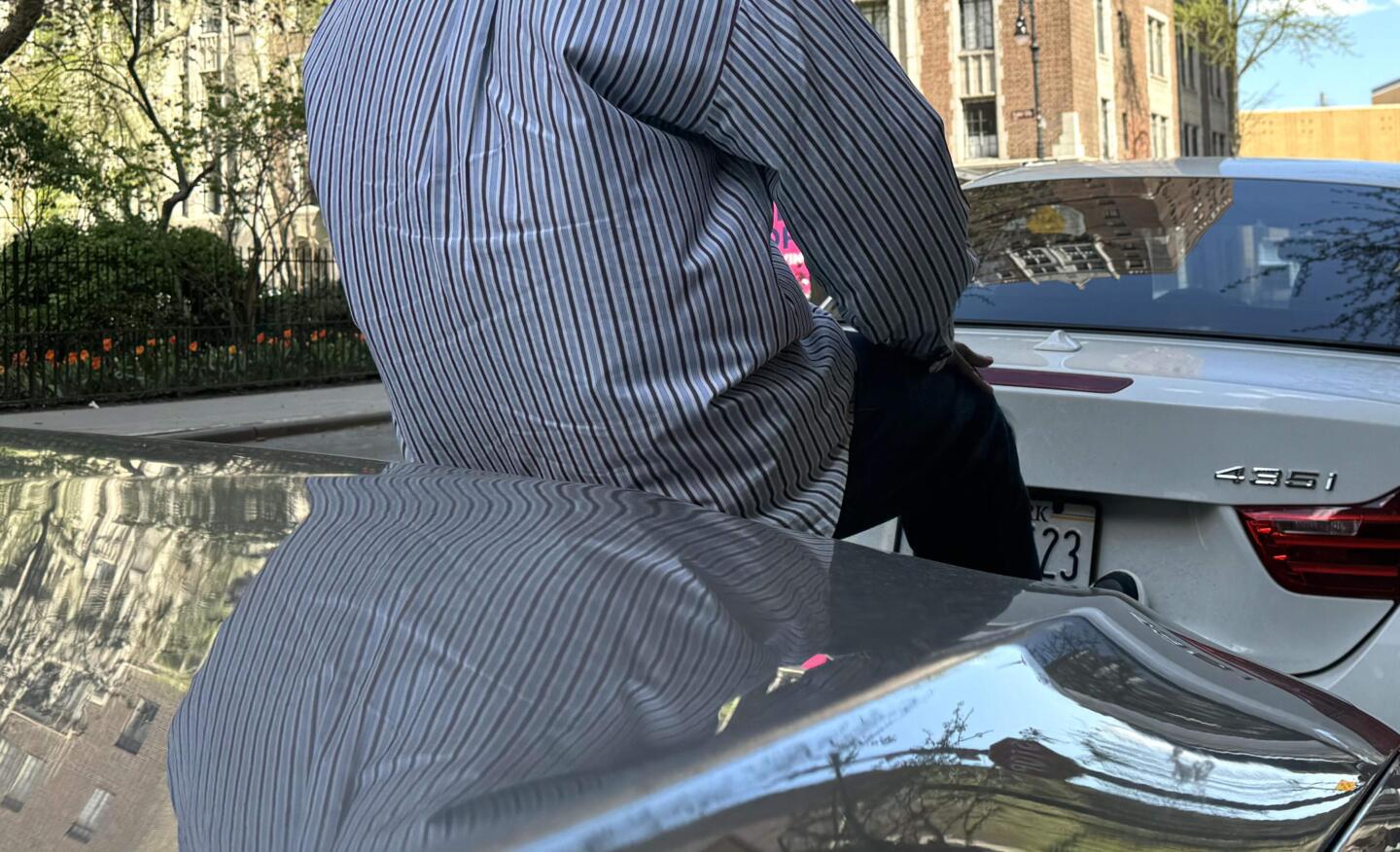A Man Is Sitting on the Hood of Your Car. What Should You Do?

VNS Health is committed to keeping its team members safe, particularly those who work in the field. To that end, VNS Health has an individual on staff whose primary focus is to keep team members safe. Our Emergency Management and Employee Safety Director, Lauren Campbell, works with departments across the organization as well as outside agencies to implement and maintain ways to keep both team members in the field and those based in the office as safe as possible.
Here, below are four true-life situations experienced by VNS Health team members. We’ve included how the team member responded, and Lauren’s advice on what to do if something similar should ever happen to you.
Do you have a safety-related question for Lauren that you’d like to be considered in our next safety article? If yes, click here to submit.
“A man was sitting on the hood of my car.“

“Around 4:30 p.m., I exited the office to go to my car. When I got to it, I noticed a man sitting on the hood of my car with their feet extended to the car parked in front of mine. As I approached my car, I said hello to the gentleman and ask that he please remove himself from the hood of my car because I wanted to leave. He did not move, however. I asked him again, and he still did not move. I placed my work bags in the back of my car and got in and started the engine in the hope that he’d move then—but he didn’t. I proceeded to honk the horn a couple of times. Still nothing. Trying not to startle the man, I started up the car and moved the car back just a bit. The man jerked, but still did not get off the hood of my car. I moved the car a little more and the man slid down off my hood. I was unable to see what had happened to him, so I got out to check that he was okay, but I didn’t see him. Worried about where he was, I ran back to the office and told the security guard and two colleagues what just happened. The security guard escorted me back to my car. This resulted in another altercation with the man, this time with the security guard. So I finally called 911.”

The team member took a calm approach in their initial response, which was the right thing to do. However, they also did a couple of things (such as honking the horn and moving the vehicle while the individual was still on it) that may have escalated the situation rather than defusing it. Instead, after one or two attempts at asking the individual to move off, the safer choice would have been returning immediately to the office and taking the same steps she eventually took anyway—requesting a Security Guard to walk back to the car with her, and/or calling 911 for assistance.
“While riding the subway to go home…“

“While riding the subway to go home, I had a minor physical bump with this man, which happens from time to time when you’re using public transportation. “I’m sorry,” I said to the man. He then shouted at me, ‘Sorry is not a word, you should say ‘Excuse me!’ The man then went on a rant, insulting me. I walked away from the man, but he followed me.”

The team member apologized and walked away, which is a good response. You should try never to argue with a person in the subway, and you should distance yourself from any perceived threat as soon as possible—even if you’re in the right. When you’re riding in a subway car, stay alert and try and stand near a crowd of people where you’ll feel more comfortable. Remember, too, that if someone on the subway car makes you feel uncomfortable, you can always leave the train even if it’s not your stop.
When riding on the subway, use shared security protocols and past personal experiences to help create a safety plan for yourself. If you are followed on the platform as this team member was, walk with the crowd. Keep in mind that you may have to change your direction, look for law enforcement, and/or call 911 if you feel threatened. Should you have an encounter with someone, make a mental note of the other person’s appearance and clothing. If you do end up speaking with a law enforcement officer, try to provide as much detail about the incident and perpetrator as possible.
“I was waiting in my car for the traffic light to change, when a man opened my front passenger door.“

“I was in in my car waiting for the traffic light to change, when a man opened the front passenger door and attempted to enter my car. I yelled at him to close the door. He yelled back at me but did not enter my car. The traffic light changed then, and he slammed the door shut. I drove off.”

When driving, always make sure the doors to your vehicle are locked. While it doesn’t sound like this was the case here, people may assume that you are a ride-share such as Uber or Lyft. Your vehicle may be mistaken for someone else’s, particularly if it is a popular make and model. Keeping doors locked can deter unauthorized entry caused by benign errors from occurring, and is also a safeguard against an opportunistic carjacking.
“She proceeded to follow me into the subway station.“

“I had a scary incident this morning on the way to work. A woman on the street was asking for money and I made eye contact with her as I passed by. She proceeded to follow me into the subway station. As I went down the stairs and onto the platform, she went through the gate and kept after me. I continued moving down the platform towards where a larger group of other people were waiting for the train, figuring there was safety in numbers. When she still followed me, I actually said, ‘Please leave me alone,’ since I was getting scared. She finally retreated then. I felt terrible because I knew she just needed money, but I also felt that maybe she was mentally ill—she a weird look to her eyes—so it was hard to know what to do.”

This team member’s actions were good examples of making safe choices. Their best decision was to quickly move toward the larger group based on the assessment that there would be safety in numbers. Another good choice was to asking to be left alone while in the presence of the larger crowd, so other people would be aware of the situation in case the event escalated.
It is important to note that this team member followed an approach we teach in our Active Shooter Response protocol training, known as the Run-Hide-Fight method. Local law enforcement uses a version of this called the ABC protocol, which stands for Avoid-Barricade-Confront. In this case, the team member avoided communication with the woman. When that didn’t work, they barricaded themselves within the larger crowd. When the offender persisted, the team member finally confronted them, in the presence of others, with a clear and direct verbal admonition to “Leave me alone.”